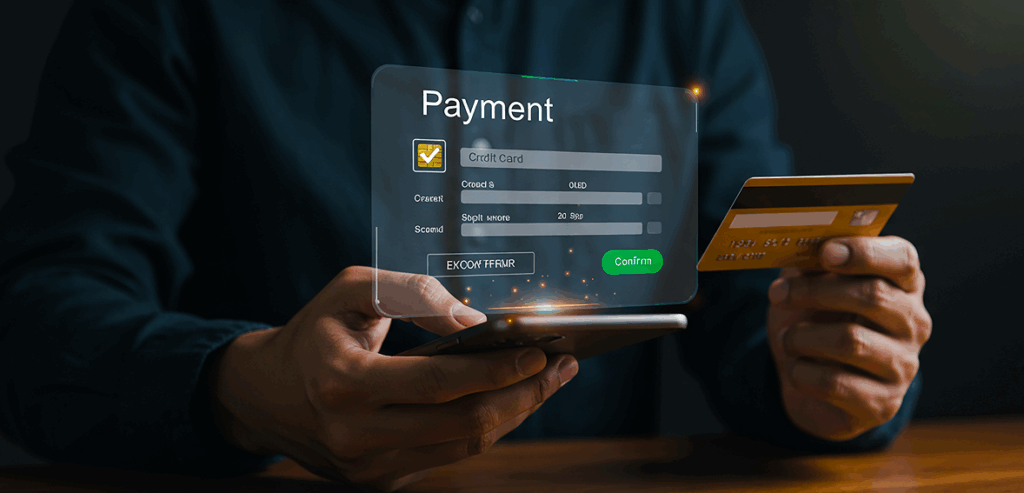
Crypto Payments 101: A Complete Guide for Businesses in 2025
The financial landscape is undergoing a seismic shift. As we advance into 2025, the conversation around digital currencies has moved from the fringes of tech forums to the center of corporate boardrooms. For businesses aiming to stay competitive, innovative, and globally relevant, understanding the fundamentals of Crypto Payments 101 is no longer a niche interest—it’s a strategic necessity. The digital age has redefined consumer expectations, and a growing segment of the global population is now holding and transacting with cryptocurrencies.
Ignoring this trend is akin to ignoring the rise of e-commerce two decades ago. The ability to accept digital assets is rapidly becoming a key differentiator, offering a gateway to a new demographic of customers, streamlined international transactions, and significantly reduced overheads. This guide is designed to be your definitive resource, a comprehensive masterclass in Crypto Payments 101. We will demystify the technology, explore the tangible benefits, navigate the potential risks, and provide a clear, step-by-step roadmap for integrating this transformative payment method into your business operations. Mastering Crypto Payments 101 today is about future-proofing your enterprise for tomorrow.
What Are Crypto Payments? A Foundational Overview

Before a business can harness the power of cryptocurrency, its leaders must grasp the core concepts. This foundational knowledge is the bedrock of any successful Crypto Payments 101 strategy. At its heart, a crypto payment is a transfer of value from one digital wallet to another, recorded on a secure, decentralized ledger.
Demystifying the Basics of Digital Currencies
Cryptocurrencies are digital or virtual tokens that use cryptography for security. Unlike traditional currencies issued by governments (fiat currencies like the USD or EUR), most cryptocurrencies are decentralized. This means they are not controlled by any single entity, such as a bank or government. This is a critical first lesson in Crypto Payments 101.
This decentralization is made possible by a technology called blockchain, which is a distributed ledger technology. Think of it as a shared digital checkbook, where every transaction is a “block” that is “chained” to the one before it, creating a permanent and immutable record. This transparency and security are what give cryptocurrencies their power. To participate, users need a “digital wallet,” a software program that stores their public and private keys and interacts with various blockchains to send and receive digital currency. Understanding these components is integral to Crypto Payments 101.
How Crypto Transactions Differ from Traditional Payments
To truly appreciate the value proposition, it’s essential to understand the key differences between crypto and conventional payment systems like credit cards or bank transfers. These distinctions are a central theme in our Crypto Payments 101 guide.
- Decentralized vs. Centralized: Traditional payments rely on intermediaries like banks and payment processors (e.g., Visa, Mastercard) to verify and process transactions. Crypto payments are typically peer-to-peer, cutting out the middleman.
- Transaction Fees: The absence of multiple intermediaries often results in significantly lower transaction fees for merchants. This is a major financial incentive that any Crypto Payments 101 course would highlight.
- Irreversibility: Once a crypto transaction is confirmed on the blockchain, it cannot be reversed. This eliminates the risk of fraudulent chargebacks, a costly problem for many businesses.
- Transaction Speed: While speeds can vary depending on the specific cryptocurrency and network congestion, many crypto transactions can settle much faster than international bank transfers, which can take days.
- Global Accessibility: Cryptocurrencies are borderless. A customer in Japan can pay a merchant in Argentina as easily as if they were in the same room, without worrying about exchange rates or international banking fees. This global nature is a core advantage explained in Crypto Payments 101.
The Compelling Benefits of Accepting Cryptocurrency for Your Business
Moving beyond the technicals, let’s explore the practical, bottom-line advantages of integrating crypto. A solid grasp of these benefits is what makes learning about Crypto Payments 101 so compelling for forward-thinking entrepreneurs.
Tapping into a New, Tech-Savvy Customer Base
The demographic of cryptocurrency holders is expanding rapidly. These are often early adopters, tech-savvy individuals, and a younger generation with significant purchasing power. By accepting crypto, you send a powerful signal that your business is modern, innovative, and aligned with the future of finance. This can attract a completely new segment of loyal customers who actively seek out merchants that support their preferred payment method. This market expansion is a key objective of implementing a Crypto Payments 101 framework.
Slashing Transaction Fees and Boosting Your Bottom Line
For any business, especially small to medium-sized enterprises, transaction fees are a significant operational cost. Credit card companies typically charge between 2% and 4% per transaction. In contrast, crypto payment processing fees are often 1% or even lower.
Consider a business with $1 million in annual revenue. A 3% credit card fee amounts to $30,000 in costs. A 1% crypto processing fee on the same amount would be just $10,000, representing a $20,000 savings. This direct impact on profitability is one of the most persuasive arguments within Crypto Payments 101.
Eliminating Chargeback Fraud for Good
Chargeback fraud, where a customer makes a purchase and then disputes the charge with their credit card company to get their money back, costs merchants billions of dollars annually. Due to the irreversible nature of blockchain transactions, chargebacks are virtually impossible with crypto payments. Once a payment is sent and confirmed, it is final. This single feature can save businesses immense amounts of time, money, and administrative headaches. Any deep dive into Crypto Payments 101 must emphasize this powerful anti-fraud feature.
Enhancing Global Reach and Financial Inclusion
If your business has an international audience or aspires to one, crypto is a game-changer. It removes the complexities and high costs of cross-border payments. You no longer need to deal with multiple payment gateways for different regions, exorbitant currency conversion fees, or slow wire transfers. A customer anywhere in the world can pay you instantly. This seamless global commerce is a foundational promise of the Crypto Payments 101 philosophy. Furthermore, it promotes financial inclusion by allowing individuals without access to traditional banking services to participate in the global digital economy.
Navigating the Challenges and Risks: A Realistic Look
While the benefits are substantial, a responsible Crypto Payments 101 guide must also address the potential challenges. A proactive and informed approach is key to mitigating these risks effectively.
The Specter of Price Volatility
This is often the first concern for businesses new to crypto. The value of cryptocurrencies like Bitcoin and Ethereum can fluctuate significantly in short periods. Accepting a payment worth $100 today might see its value drop to $90 tomorrow.
However, this risk is almost entirely solvable. Modern crypto payment processors offer instant fiat conversion. This means that when a customer pays in crypto, the processor can instantly convert it to your local currency (like USD, EUR, etc.) and deposit it into your bank account. This way, you get all the benefits of accepting crypto without ever having to hold the volatile asset yourself. For businesses that are more risk-averse, this feature is a critical part of a safe Crypto Payments 101 implementation.
Understanding the Regulatory Landscape in 2025
The legal and regulatory environment for cryptocurrencies is still evolving globally. Tax implications, reporting requirements, and rules vary from one country to another. As of 2025, many governments have provided clearer guidance, but it remains a complex area.
It is crucial for any business to consult with legal and tax professionals who are knowledgeable in the digital asset space. They can ensure you remain compliant with all local regulations regarding income reporting and tax obligations. Staying compliant is a non-negotiable aspect of professional Crypto Payments 101.
Security Concerns and Best Practices
Security is paramount in the digital world. If you choose to hold cryptocurrency yourself (instead of instantly converting it to fiat), you are responsible for its security. This involves managing digital wallets and protecting “private keys,” which are the passwords that grant access to your funds.
Best practices include:
- Using reputable and secure crypto payment processors.
- Employing strong passwords and two-factor authentication (2FA).
- Understanding the difference between “hot wallets” (connected to the internet, convenient for transactions) and “cold wallets” (offline, for secure long-term storage).
- Educating your team on security protocols. Proper security is a cornerstone of any responsible Crypto Payments 101 curriculum.
How to Start Accepting Crypto Payments: A Step-by-Step Guide

Now for the practical application. This section provides a clear, actionable roadmap for integrating crypto payments into your business. Following these steps will take the guesswork out of your Crypto Payments 101 journey.
Step 1: Choosing Your Integration Method
There are two primary ways to start accepting crypto:
- Direct Integration (The DIY Approach): This involves setting up your own cryptocurrency wallet and providing your wallet address to customers. They send payments directly to you. This method offers maximum control and zero processing fees but comes with significant responsibility. You are solely in charge of security, managing private keys, tracking payments manually, and handling the accounting and volatility aspects. This is recommended only for highly tech-savvy businesses or developers.
- Using a Crypto Payment Processor (The Recommended Approach): This is the easiest and safest method for the vast majority of businesses. A crypto payment processor (also known as a payment gateway) acts as an intermediary, much like PayPal or Stripe does for traditional payments. They provide a seamless checkout experience for the customer, handle the transaction, offer instant conversion to fiat currency, and provide a dashboard for tracking and management. This approach makes the entire Crypto Payments 101 process accessible and manageable.
Step 2: Selecting the Right Cryptocurrencies to Accept
You don’t need to accept all of the thousands of cryptocurrencies in existence. A smart Crypto Payments 101 strategy involves starting with the most established and widely used ones.
- Bitcoin (BTC): As the original and most well-known cryptocurrency, accepting Bitcoin is a must.
- Ethereum (ETH): The second-largest cryptocurrency, it has a massive and active user base.
- Stablecoins (USDC, USDT): These are cryptocurrencies pegged to the value of a fiat currency, like the US dollar. They are not volatile, which makes them very attractive for both customers and merchants for payments. Any modern Crypto Payments 101 course will emphasize the importance of stablecoins.
- Other Altcoins: Depending on the payment processor, you might also consider accepting other popular coins with low fees and fast transaction times, like Litecoin (LTC) or Solana (SOL).
Step 3: Integrating with a Crypto Payment Gateway
Once you’ve chosen a payment processor, the integration process is typically straightforward, especially for e-commerce businesses. Most top-tier processors offer simple plugins for major platforms like:
- Shopify
- WooCommerce (for WordPress)
- Magento
- BigCommerce
The process usually involves signing up for an account with the processor, completing their verification (KYB – Know Your Business) process, and then installing and configuring the relevant plugin on your e-commerce store. For brick-and-mortar stores, many processors provide Point of Sale (POS) solutions that can generate a QR code for customers to scan and pay. This ease of integration is a key selling point in the world of Crypto Payments 101.
Step 4: Setting Up Your Payout and Settlement Preferences
This is a critical step in your Crypto Payments 101 setup. Within your payment processor’s dashboard, you will define how you want to receive your money. You have three main options:
- 100% Fiat Settlement: The most common and risk-free option. Every crypto payment you receive is instantly converted to your chosen fiat currency (e.g., USD) and settled to your bank account on a daily or weekly basis.
- 100% Crypto Settlement: For businesses that believe in the long-term value of crypto and are comfortable with the volatility, you can choose to receive your payouts in the cryptocurrency that was paid (e.g., receive BTC for a BTC payment).
- Split Settlement: A hybrid approach. You can choose to settle a portion in fiat (e.g., 90%) to cover operational costs and hold the remaining portion in crypto (e.g., 10%) as an investment.
Step 5: Marketing Your New Payment Option to Customers
Don’t keep it a secret! Once you’re set up, you need to let your customers and the world know.
- Add Logos: Place the logos of the cryptocurrencies you accept on your website’s footer and on the checkout page.
- Create a Banner: Announce the new payment option with a prominent banner on your homepage.
- Social Media Campaign: Post about your new payment method on all your social media channels. Target crypto-related hashtags.
- Email Newsletter: Inform your existing customer base via your email newsletter.
- Press Release: For larger businesses, issuing a press release can generate significant publicity and attract new customers. Promoting this feature is the final, crucial step in the Crypto Payments 101 process.
Comparing Top Crypto Payment Processors for Businesses in 2025
Choosing the right partner is vital. The table below compares some of the leading crypto payment processors to help you make an informed decision. This comparison is an essential piece of any comprehensive Crypto Payments 101 education.
| Feature | BitPay | Coinbase Commerce | CoinPayments |
| Transaction Fee | 1% | 1% (may be waived for certain volumes) | 0.5% |
| Supported Coins | 15+ including BTC, ETH, USDC, DOGE, LTC | 10+ including BTC, ETH, USDC, DAI | 2,000+ including a vast range of altcoins |
| Fiat Settlement | Yes, in 12 major fiat currencies | Yes, in USD (for US-based users) | Yes, via third-party integrations |
| E-commerce Plugins | Shopify, WooCommerce, Magento, and more | Shopify, WooCommerce | Shopify, WooCommerce, Magento, OpenCart |
| Key Features | BitPay Card, robust invoicing, POS | Simple integration, trusted brand name | Widest coin support, auto-conversion |
| Ideal For | Established businesses, global merchants | Small to medium businesses, Shopify stores | Businesses wanting to accept many altcoins |
When evaluating these options, consider factors beyond just the fee. Look at the quality of their customer support, the ease of integration with your specific platform, and the settlement options available in your country. This due diligence is a mark of a well-executed Crypto Payments 101 strategy.
The Future of Digital Commerce: Beyond Crypto Payments 101
Mastering Crypto Payments 101 in 2025 is just the beginning. The technology is a stepping stone into a much broader evolution of digital commerce and the internet itself, often referred to as Web3.
The Rise of Central Bank Digital Currencies (CBDCs)
Governments around the world are actively researching and developing their own digital currencies. While these will be centralized and controlled by central banks, their existence will further normalize the idea of digital currency transactions for the general public, likely boosting the entire digital payment ecosystem.
NFTs and Their Role in Commerce and Loyalty Programs
Non-Fungible Tokens (NFTs) are unique digital assets on a blockchain. Beyond digital art, businesses are exploring using NFTs as digital receipts, event tickets, proof of ownership for luxury goods, and as components of innovative customer loyalty programs, offering exclusive access or rewards to token holders.
Web3 and the Decentralized Economy
Web3 represents the next iteration of the internet, built on decentralized principles using blockchain technology. By integrating crypto payments now, your business is not just adding a new payment rail; it’s taking its first step into this new decentralized economy. It positions you to engage with customers in future metaverses, decentralized applications (dApps), and other emerging digital environments. Getting started with Crypto Payments 101 is the foundational step to participating in this future.
Conclusion: Your Next Step in the Crypto Payments 101 Journey

The evidence is clear: the question for businesses in 2025 is no longer if they should accept cryptocurrency, but how and when. The advantages—from dramatic cost savings and fraud elimination to accessing a new global customer base—are too significant to ignore. While challenges like volatility and regulation exist, they are being effectively managed by a mature ecosystem of payment processors and professional advisors.
This guide has provided you with the foundational knowledge of Crypto Payments 101, a clear understanding of the benefits and risks, and a practical step-by-step plan for implementation. Your journey doesn’t end here. The next step is to take action. Begin researching the payment processors mentioned, discuss the opportunity with your team, and consult with financial advisors. By embracing the principles of Crypto Payments 101, you are not just optimizing your payment system; you are strategically positioning your business at the forefront of the digital commerce revolution.
Frequently Asked Questions (FAQ)
1. Is accepting crypto payments legal for my business?
Yes, in most countries, including the United States, Canada, and most of Europe, it is perfectly legal for businesses to accept cryptocurrency as a form of payment. However, the regulatory landscape can be complex and varies by jurisdiction. It is essential to consult with a legal professional familiar with digital assets in your specific region to ensure full compliance.
2. Do I have to pay taxes on crypto payments I receive?
Yes. Tax authorities like the IRS in the United States treat cryptocurrency as property, not currency. When you receive a crypto payment, it is considered income, valued at its fair market value at the time of receipt. You must report this income just as you would any other. If you hold the crypto and it appreciates in value before you sell it, you may also be subject to capital gains tax. A tax advisor is crucial for proper handling.
3. What is the easiest way for a small business to start accepting crypto?
The most straightforward and recommended method is to use a crypto payment processor like BitPay or Coinbase Commerce. These services handle all the technical complexity. They provide simple plugins for popular e-commerce platforms (like Shopify or WooCommerce) and manage the entire transaction process, including offering an option to instantly convert the crypto payment into your local fiat currency (e.g., US Dollars) to avoid price volatility. This is the core lesson of practical Crypto Payments 101 for new adopters.
4. How do I protect my business from crypto price drops (volatility)?
The best way to eliminate the risk of price volatility is to use a payment processor that offers instant fiat settlement. When a customer pays you $100 worth of Bitcoin, the processor immediately converts it to $100 in your chosen currency and deposits it into your bank account. This way, your business receives the exact fiat value of the sale, and you are never exposed to the cryptocurrency’s price fluctuations.
5. Will my customers actually use crypto to pay?
While still a growing payment method, the number of people holding and willing to spend cryptocurrency is increasing exponentially. By offering it as an option, you cater to this rapidly expanding, tech-forward demographic that often actively seeks out businesses that accept crypto. It also makes your business more attractive to international customers who may find crypto a cheaper and faster way to pay than traditional cross